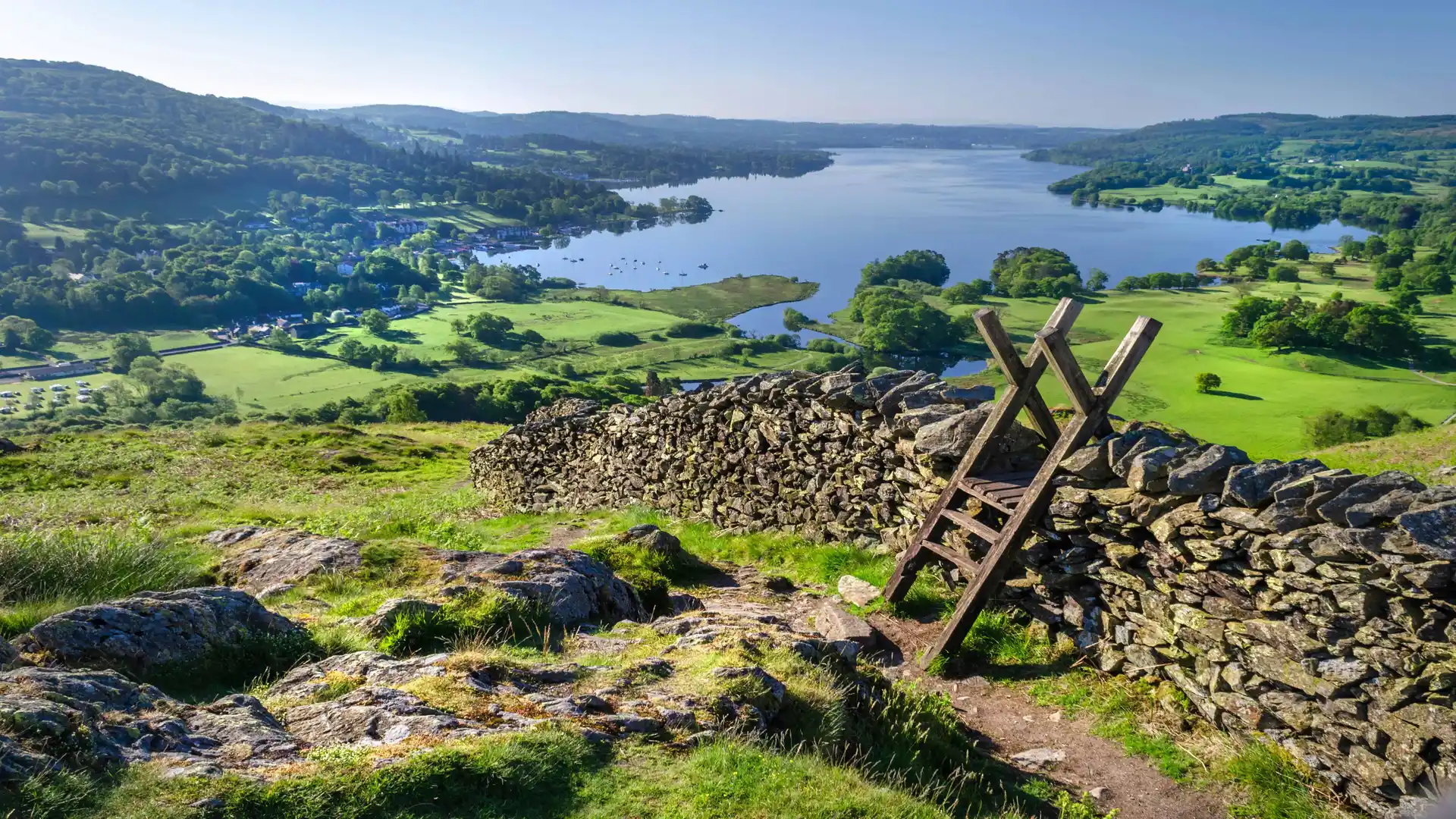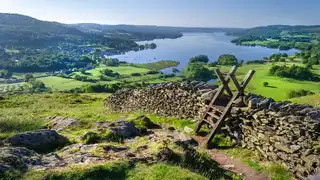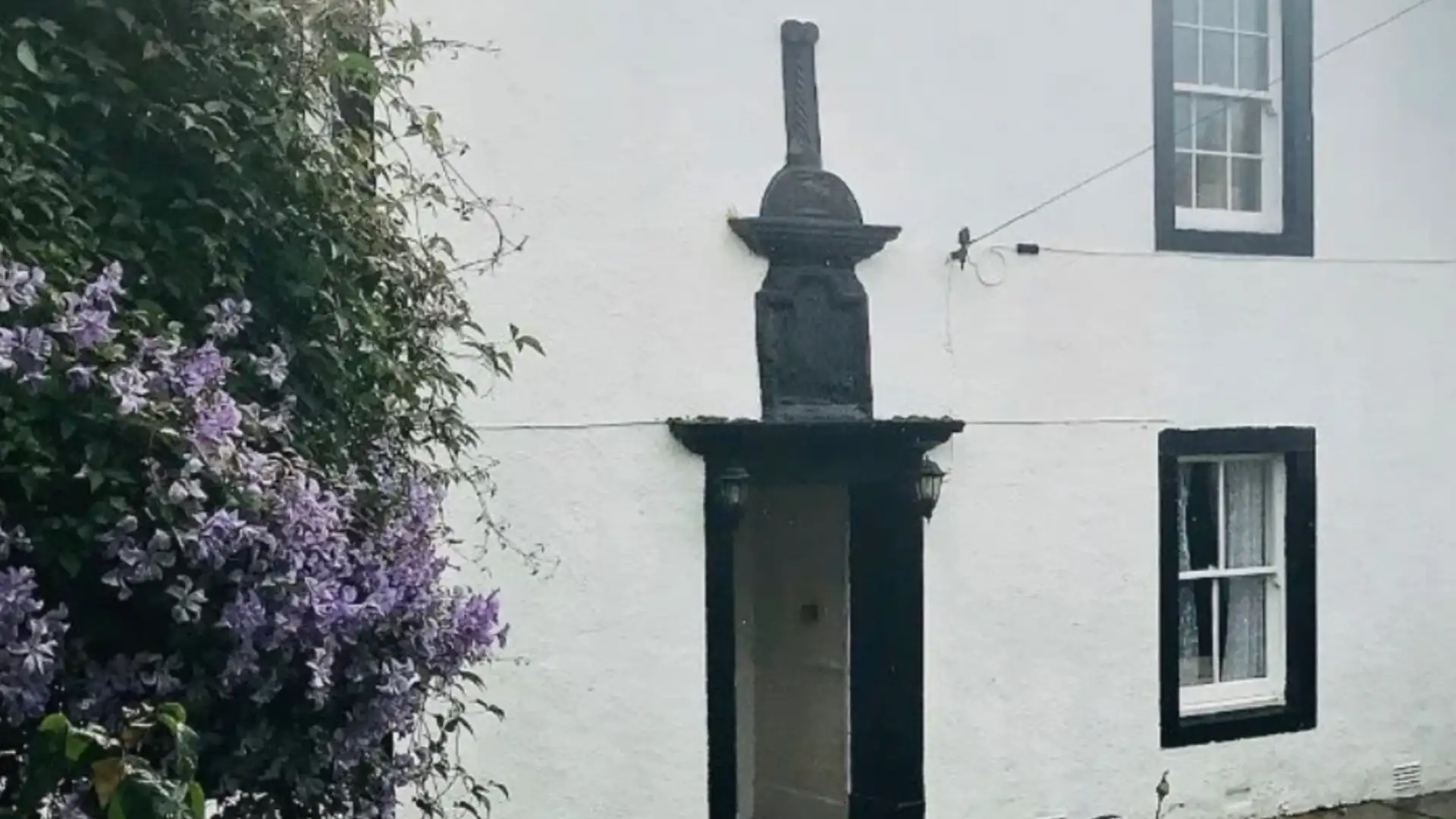

Where fells rise from ancient valleys, and still waters reflect a sky full of change.
Cumbria is England’s great walking county — home to the wild drama of the Lake District, the quiet uplands of the North Pennines, and the wave-battered edges of the Cumbrian coast. It is one of the UK’s most iconic destinations for walking holidays, with landscapes shaped by water, weather, and time. Long-distance routes including the Cumbria Way, Coast to Coast Path, and Hadrian’s Wall Path weave across the county, connecting coast, mountains, valleys, and historic settlements. From classic walking bases such as Keswick, Coniston, and Grasmere to the remote Eden Valley and Solway Coast, every route here feels part of a bigger story.
Cumbria is shaped by long journeys on foot. The Cumbria Way runs through the heart of the Lake District, the Coast to Coast Path begins on the western shore at St Bees, and Hadrian’s Wall Path traces the northern edge of Roman Britain. But Cumbria also excels at quieter outdoor adventures — a shaded woodland path beside a rushing beck, a climb to a high tarn, or a ridge walk with fells rolling away in every direction. Alongside walking, the county is also well suited to gentle cycling holidays, with quiet lanes, valley roads, and lake corridors linking villages and viewpoints. With a wide choice of independent places to stay, Cumbria works just as well for multi-day self-guided journeys as it does for short scenic escapes.
This is where England keeps its wildness. And where walkers return, again and again.
A 70-mile route through the heart of the Lake District, from Ulverston to Carlisle, taking in quiet valleys, famous peaks, and iconic walking towns such as Coniston, Grasmere, and Keswick.
Beginning at St Bees on the Irish Sea, this section crosses the Lake District from west to east, with highlights including Ennerdale, Borrowdale, Grasmere, and the classic climb over Helm Crag.
From Bowness-on-Solway inland toward Carlisle and beyond — a Roman frontier rich in coastal views, archaeology, and wide open skies.
The untamed Cumbrian shoreline from Walney Island and the Duddon Estuary north to the Solway Firth, with saltmarshes, dunes, cliffs, and distant fells as your backdrop.
Much of what walkers think of as “Cumbria” now falls under the newer local authority of Westmorland and Furness, covering areas such as Barrow-in-Furness, Kendal, Penrith, and the Eden Valley. Other parts of Cumbria are now governed separately under Cumberland. On Self Guided Travel, we continue to group these landscapes under Cumbria, reflecting how most travellers, walkers, and walking holidays still understand the region. If you’re exploring these places, you’re in exactly the right spot.

